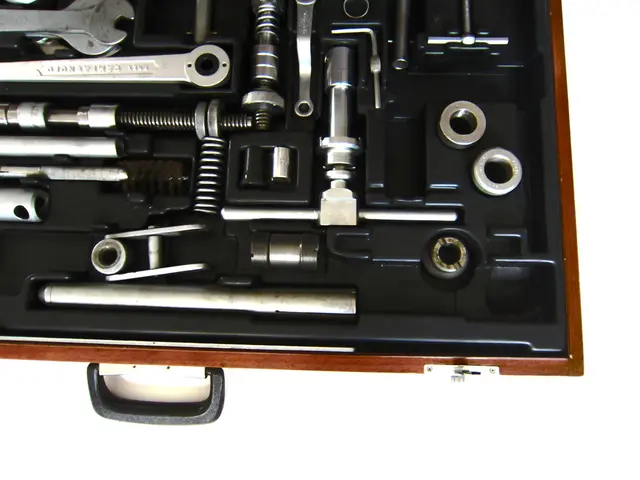Differentiating between Reflectors and Refractors for Optimal Visual Astronomy
In the world of telescope shopping, two popular choices often stand out - refractor and reflector telescopes. Each has its own unique advantages and disadvantages, making them suitable for different types of astronomical viewing.
For first-time telescope buyers, refractor telescopes are generally simpler, easier to maintain, and good for viewing the Moon, the Sun (with proper filters), and some deep-sky objects. They use lenses and tend to be more compact, with less frequent alignment needed. However, they can be less effective for observing planets or smaller deep-sky targets. The primary disadvantage of the refractor is chromatic aberration (CA), which causes color fringing on bright objects.
On the other hand, reflector telescopes, such as Newtonian reflectors or Dobsonians, often offer larger apertures at a lower cost, making them better for deep-sky observation (e.g., galaxies and nebulae) due to their greater light-gathering ability. However, they require more maintenance, including periodic mirror alignment (collimation) and cleaning.
Here's a summary of the key differences:
| Feature | Refractor Telescope | Reflector Telescope | |---------------------------|-----------------------------------------------|----------------------------------------------| | Optical design | Uses lenses (objective lens + eyepiece) | Uses mirrors (primary concave + secondary flat) | | Maintenance | Low; lenses sealed, rarely need adjustment | Higher; mirrors require collimation and cleaning | | Cost for aperture size | Generally more expensive per inch of aperture | More affordable for larger apertures | | Image quality | Sharp images with less optical distortion (good for lunar, solar) | Excellent for deep-sky with better aperture, but possible mirror alignment issues | | Portability and size | Usually compact and lightweight | Bulkier, especially Dobsonian mount models | | Best uses | Moon, solar system objects, binary stars | Deep-sky objects, faint galaxies, and nebulae |
For beginners, small refractors are user-friendly and low-maintenance, ideal for casual planetary and lunar viewing. On the other hand, beginner reflector telescopes (especially Dobsonians) offer better performance for deep-sky objects at a lower price but require a bit more upkeep and familiarity to adjust properly. Assessing your primary viewing interests and willingness to maintain the instrument will guide your choice.
If you're looking for a high-end refractor, the apochromatic refractor (APO) virtually eliminates chromatic aberration through the use of special glass and usually includes an additional primary lens element. Refractors tend to hold the alignment of the elements in the optical path because the front lenses are rigidly mounted, making them fairly maintenance-free.
When mated to a Dobsonian mount, you have a very cost-effective solution that is rock steady and simple to use. An achromatic refractor, also called a doublet, has two lens elements made of different glass to reduce chromatic aberration.
The advantage of the Newtonian reflector design is that it is less expensive to manufacture quality mirrors than lenses, especially as they get larger. To address chromatic aberration, refractor designers have created two variations: achromatic and apochromatic refractors. Reflectors do introduce an aberration called coma, especially in lower focal ratio designs.
If you pursue astronomy long term, you may end up with three types of visual-instruments: binoculars (refractor), a grab and go, and a light bucket (typically something 8" or larger). The smaller the focal ratio of the achromatic optical tube, the more chromatic aberration you are likely to see. Refractors are typically considered to have about a 1-inch advantage in light-gathering ability for telescopes with a 5" or less aperture.
Achromats are usually for visual use, not astrophotography. With mirrors, there is no splitting of the light into its color components as you get with the refractor, so chromatic aberration is not an issue. The refractor design has no central obstruction in the light path, potentially improving light-gathering ability and image sharpness.
If you are looking for a scope of 4" or less and are concerned about learning collimation, a refractor is a good choice. Collimation is a maintenance process that you will need to learn with most Newtonians over 4" in aperture. The other factor with reflectors is the need for regular collimation.
If you want something larger than 4 inches, you will likely be looking at a reflector. The Newtonian design really becomes cost-effective at this size and larger.
- Refractor telescopes, suitable for beginners and casual viewing, use lenses and are known for their low maintenance and compact size, making them excellent for observing the moon and solar system objects.
- In contrast, reflector telescopes, such as Newtonian reflectors or Dobsonians, offer larger apertures at a lower cost, which is beneficial for deep-sky observation like galaxies and nebulae.
- Apochromatic refractors are high-end refractor telescopes that use special glass to virtually eliminate chromatic aberration, often including an additional primary lens element.
- When paired with a Dobsonian mount, you get a cost-effective solution that is easy to use and offers stability.
- Achromatic refractor, or doublets, have two lens elements made of different glass to reduce chromatic aberration.
- If you're interested in long-term astronomy, you might accumulate three types of visual instruments: binoculars (refractor), a grab and go, and a light bucket (typically something 8" or larger).
- For small scopes of 4" or less, a refractor is a good choice due to its ease of use and minimal collimation needed, unlike most Newtonian reflectors over 4" in aperture that require collimation as part of the maintenance process.




